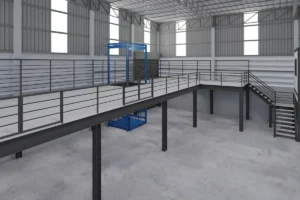
How to Plan an Efficient Warehouse Layout: A Step-by-Step Guide with Checklist
An efficient warehouse layout can be the difference between smooth operations and costly delays. From receiving to dispatch, every zone and workflow needs to be strategically planned for optimal performance.
In this guide, we’ll break down how to plan your warehouse layout step-by-step, and we’ll wrap up with a practical checklist to guide your implementation.
Step-by-Step Guide to Warehouse Layout Planning
Step 01
Map the Material Flow
Start by identifying how goods will move through your warehouse—from unloading to storage to dispatch.
- Outline key operational zones: receiving, inspection, storage, picking, packing, and shipping.
- Design a linear flow that reduces double handling and backtracking.
- Keep high-frequency areas easily accessible.
Step 02
Choose the Right Storage Systems
Match storage solutions to your product mix and handling requirements.
- Pallet racking: Ideal for heavy-duty, bulk storage.
- Shelving systems: Suitable for fast-moving, lightweight goods.
- Mezzanine floors: Great for maximising vertical space.
- Temperature-controlled areas: For perishable or sensitive items.
Step 03
Define Aisles and Equipment Paths
Plan clear, wide paths for equipment and staff movement.
- Determine minimum aisle width based on equipment (e.g., forklifts, pallet jacks).
- Design separate walkways for personnel to improve safety.
- Allocate turning zones and docking space near loading bays.
Step 04
Address Safety and Compliance
Ensure your layout meets all legal and safety requirements.
- Add fire exits, extinguishers, and emergency pathways.
- Install adequate lighting and ventilation.
- Mark hazard zones, signage, and loading limits.
Step 05
Design for Future Flexibility
Build a layout that can adapt as your business grows.
- Use modular racks or movable partitions.
- Reserve expansion areas for future use.
- Ensure that digital systems (e.g., WMS) can scale with operations.
Warehouse Layout Planning Checklist
- Review current workflow and identify inefficiencies
- Define operational zones and design logical flow
- Select appropriate storage systems for each item type
- Plan for equipment paths, turning radii, and docking access
- Ensure safety compliance with fire and exit routes
- Consider utilities: lighting, HVAC, and power access
- Allow room for admin spaces, control rooms, and staff zones
- Leave buffer areas for future expansion
- Test the layout digitally before construction
- Consult experts or use CAD software for precision
An optimised warehouse layout reduces operational friction, enhances productivity, and creates room for scalable growth. At Advantis Engineering, we offer expert design and turnkey construction services for warehouses across Sri Lanka and beyond.




